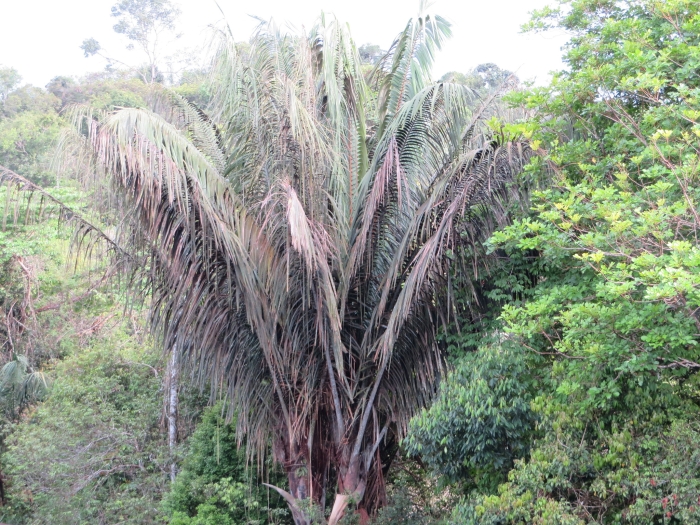Patawa
(Oenocarpus bataua)
Patawa (Oenocarpus bataua)
/
/

Jens-Christian Svenning
CC BY 4.0
Image By:
Jens-Christian Svenning
Recorded By:
Copyright:
CC BY 4.0
Copyright Notice:
Photo by: Jens-Christian Svenning | License Type: CC BY 4.0 | License URL: http://creativecommons.org/licenses/by/4.0/ | Rights Holder: Jens-Christian Svenning | Publisher: iNaturalist | Date Created: 2015-07-16T14:47:04-07:00 |

























Estimated Native Range
Summary
Oenocarpus bataua, commonly known as Patawa or Seje, is a palm tree that is evergreen and native to the understory and margins of tropical rainforests in South America, including countries such as Panama, Trinidad, and throughout the Amazon basin. It thrives in areas with high humidity and is often found along riverbanks and in areas with seasonally flooded soils. Oenocarpus bataua can reach up to 82 feet (25 meters) in height with a solitary, smooth, and ringed stem. Its pinnate leaves can grow up to 33 feet (10 meters) long, and it produces small, yellowish-green flowers. The tree is particularly noted for its purple-black fruits, which are rich in high-quality oil and are edible.
The Patawa palm is valued for its multi-purpose fruits, which are used in food, cosmetics, and traditional medicine. The high-quality oil extracted from the fruits is known for its nutritional benefits and is also employed in treating coughs and bronchitis. The leaves and rachis are utilized in crafting baskets and temporary housing, showcasing the plant’s versatility. In cultivation, it requires a tropical climate with consistent moisture and does well in soils of low to intermediate nutrient concentration. It is not commonly grown in temperate regions due to its high heat and humidity requirements. While not typically used in urban or residential landscapes, it is an important species for agroforestry systems and sustainable land use practices in its native range.CC BY-SA 4.0
The Patawa palm is valued for its multi-purpose fruits, which are used in food, cosmetics, and traditional medicine. The high-quality oil extracted from the fruits is known for its nutritional benefits and is also employed in treating coughs and bronchitis. The leaves and rachis are utilized in crafting baskets and temporary housing, showcasing the plant’s versatility. In cultivation, it requires a tropical climate with consistent moisture and does well in soils of low to intermediate nutrient concentration. It is not commonly grown in temperate regions due to its high heat and humidity requirements. While not typically used in urban or residential landscapes, it is an important species for agroforestry systems and sustainable land use practices in its native range.CC BY-SA 4.0
Plant Description
- Plant Type: Tree
- Height: 20-80 feet
- Width: 10-30 feet
- Growth Rate: Moderate
- Flower Color: Yellow
- Flowering Season: Summer
- Leaf Retention: Evergreen
Growth Requirements
- Sun: Full Sun, Part Shade
- Water: High
- Drainage: Fast
Common Uses
Edible*Disclaimer: Easyscape's listed plant edibility is for informational use. Always verify the safety and proper identification of any plant before consumption.
Natural Habitat
Understory and margins of tropical rainforests, often along riverbanks and in areas with seasonally flooded soils
Other Names
Common Names: Patawa, Milpesos, Punamañe, Bataua Palm, Kumbu, Patauá, Seje
Scientific Names: , Oenocarpus bataua, Jessenia bataua, Jessenia bataua subsp. bataua,
GBIF Accepted Name: